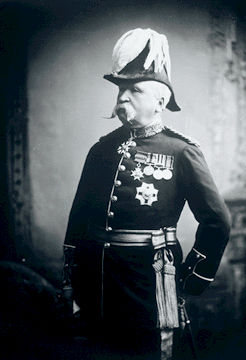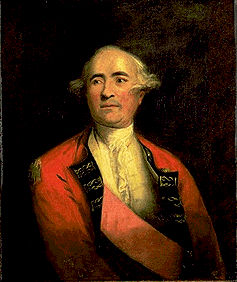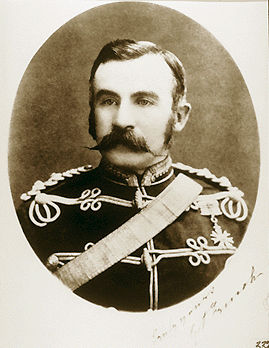Browse "People"
-
Article
Sir Francis Leopold McClintock
Sir Francis Leopold McClintock, explorer (b at Dundalk, Ire 8 July 1819; d at London, Eng 17 Nov 1907). One of the British navy's most experienced arctic explorers, he participated in several expeditions to search for Sir John FRANKLIN.
"https://development.thecanadianencyclopedia.ca/images/tce_placeholder.jpg?v=e9dca980c9bdb3aa11e832e7ea94f5d9" // resources/views/front/categories/view.blade.php
https://development.thecanadianencyclopedia.ca/images/tce_placeholder.jpg?v=e9dca980c9bdb3aa11e832e7ea94f5d9
-
Article
Sir Frederic Bowker Terrington Carter
Sir Frederic (also Frederick) Bowker Terrington Carter, prime minister of Newfoundland 1865–78, lawyer, politician, judge (born 12 February 1819 in St. John's, NF; died 1 March 1900 in St. John’s).
"https://d2ttikhf7xbzbs.cloudfront.net/media/media/836fead3-f312-4728-a305-bbf2f891608f.jpg" // resources/views/front/categories/view.blade.php
https://d2ttikhf7xbzbs.cloudfront.net/media/media/836fead3-f312-4728-a305-bbf2f891608f.jpg
-
Article
Sir Frederic Nicholls
Sir Frederic Nicholls, capitalist, business lobbyist (b in England 23 Nov 1856; d at Battle Creek, Mich 25 Oct 1921). Nicholls played a crucial role in promoting early manufacturing in Canada. Educated as an electrical engineer in Germany, he came to Canada in 1874.
"https://development.thecanadianencyclopedia.ca/images/tce_placeholder.jpg?v=e9dca980c9bdb3aa11e832e7ea94f5d9" // resources/views/front/categories/view.blade.php
https://development.thecanadianencyclopedia.ca/images/tce_placeholder.jpg?v=e9dca980c9bdb3aa11e832e7ea94f5d9
-
Article
Sir Frederick Dobson Middleton
Sir Frederick Dobson Middleton, soldier (b at Belfast, Ire 2 Nov 1825; d at London, Eng 25 Jan 1898).
"https://d2ttikhf7xbzbs.cloudfront.net/media/media/85520200-fd54-4f91-8c2b-33ae300a8c8d.jpg" // resources/views/front/categories/view.blade.php
https://d2ttikhf7xbzbs.cloudfront.net/media/media/85520200-fd54-4f91-8c2b-33ae300a8c8d.jpg
-
Article
Sir Frederick Gordon Guggisberg
Sir Frederick Gordon Guggisberg, soldier, governor (b at Galt, Ont 20 July 1869; d at Bexhill, Eng 21 Apr 1930). Commissioned in the Royal Engineers in 1889, he served first in Singapore, then at the Royal Arsenal, Woolwich, and as a surveyor in West Africa 1902-14.
"https://development.thecanadianencyclopedia.ca/images/tce_placeholder.jpg?v=e9dca980c9bdb3aa11e832e7ea94f5d9" // resources/views/front/categories/view.blade.php
https://development.thecanadianencyclopedia.ca/images/tce_placeholder.jpg?v=e9dca980c9bdb3aa11e832e7ea94f5d9
-
Article
Sir Frederick Banting
Sir Frederick Grant Banting, KBE, MC, FRS, FRSC, co-discoverer of insulin, medical scientist, painter (born 14 November 1891 in Alliston, ON; died 21 February 1941 near Musgrave Harbour, Newfoundland). Banting is best known as one of the scientists who discovered insulin in 1922. After this breakthrough, he became Canada’s first professor of medical research at the University of Toronto. Banting was also an accomplished amateur painter. As an artist, he had links to A.Y. Jackson and the Group of Seven.
"https://d2ttikhf7xbzbs.cloudfront.net/media/media/d3dc77f1-7500-402b-b3a5-c7c9ad5ed034.jpg" // resources/views/front/categories/view.blade.php
https://d2ttikhf7xbzbs.cloudfront.net/media/media/d3dc77f1-7500-402b-b3a5-c7c9ad5ed034.jpg
-
Article
Sir Frederick Haldimand
Sir Frederick Haldimand, army officer, governor (b at Yverdon, Swit 11 Aug 1718; d there 5 June 1791). As governor of Québec, Haldimand concentrated on defending the province militarily and the status quo politically.
"https://d2ttikhf7xbzbs.cloudfront.net/media/media/0b43f4d0-2fd6-46e8-86a0-e9c1a6530bc4.jpg" // resources/views/front/categories/view.blade.php
https://d2ttikhf7xbzbs.cloudfront.net/media/media/0b43f4d0-2fd6-46e8-86a0-e9c1a6530bc4.jpg
-
Article
Sir Frederick William Borden
Sir Frederick William Borden, physician, merchant, politician (b at Upper Canard, NS 14 May 1847; d at Canning, NS 6 Jan 1917). As minister of militia and defence 1896-1911, he reorganized the Canadian Militia. Borden represented King's County as a Liberal 1874-1911, except for 1882-87.
"https://development.thecanadianencyclopedia.ca/images/tce_placeholder.jpg?v=e9dca980c9bdb3aa11e832e7ea94f5d9" // resources/views/front/categories/view.blade.php
https://development.thecanadianencyclopedia.ca/images/tce_placeholder.jpg?v=e9dca980c9bdb3aa11e832e7ea94f5d9
-
Article
Sir Frederick William Haultain
Elected to the Territorial Assembly in 1888, he quickly emerged as leader of the faction demanding RESPONSIBLE GOVERNMENT for the Territories, and after this was won in 1897 he served as first minister of a nonpartisan administration until 1905.
"https://development.thecanadianencyclopedia.ca/images/tce_placeholder.jpg?v=e9dca980c9bdb3aa11e832e7ea94f5d9" // resources/views/front/categories/view.blade.php
https://development.thecanadianencyclopedia.ca/images/tce_placeholder.jpg?v=e9dca980c9bdb3aa11e832e7ea94f5d9
-
Article
Sir George Arthur
Sir George Arthur, soldier, colonial administrator (b at Plymouth, Eng 21 June 1784; d at London, Eng 19 Sept 1854). After an undistinguished military career and 2 minor colonial appointments, he became lieutenant-governor of Upper Canada in 1838.
"https://development.thecanadianencyclopedia.ca/images/tce_placeholder.jpg?v=e9dca980c9bdb3aa11e832e7ea94f5d9" // resources/views/front/categories/view.blade.php
https://development.thecanadianencyclopedia.ca/images/tce_placeholder.jpg?v=e9dca980c9bdb3aa11e832e7ea94f5d9
-
Article
Sir George Arthur French
Sir George Arthur French, soldier (b at Roscommon, Ire 19 June 1841; d at London, Eng 7 July 1921). A Royal Artillery officer, French established the Canadian Militia gunnery school at Kingston in 1871. As commissioner of the
"https://d2ttikhf7xbzbs.cloudfront.net/media/media/7d6888e8-5b76-4837-81fd-514027903b02.jpg" // resources/views/front/categories/view.blade.php
https://d2ttikhf7xbzbs.cloudfront.net/media/media/7d6888e8-5b76-4837-81fd-514027903b02.jpg
-
Article
Sir George Back
On a search mission for John ROSS in 1834, Back found and travelled the Thlew-ee-choh R, later named for him.
"https://d2ttikhf7xbzbs.cloudfront.net/media/media/a482d857-2391-4492-83fe-ea3938b7020d.jpg" // resources/views/front/categories/view.blade.php
https://d2ttikhf7xbzbs.cloudfront.net/media/media/a482d857-2391-4492-83fe-ea3938b7020d.jpg
-
Article
Sir George-Étienne Cartier
Sir George-Étienne Cartier, co-premier of the Province of Canada, lawyer, railway promoter, politician (born 6 September 1814 in Saint-Antoine, Lower Canada; died 20 May 1873 in London, England). Sir George-Étienne Cartier dominated the politics of Quebec for a generation. After rebelling against the government in the Rebellions of 1837–38, Cartier served as Canada’s first minister of militia and defence. Arguably the kingpin of Confederation, he was responsible for bringing French Canada, Manitoba and British Columbia into the Dominion. He also negotiated the purchase of Rupert’s Land and the North-West Territories from the Hudson’s Bay Company. He is considered a Father of Confederation.
"https://d2ttikhf7xbzbs.cloudfront.net/media/media/7cf41e7a-340d-4f23-8edc-a2ded1bd4db4.jpg" // resources/views/front/categories/view.blade.php
https://d2ttikhf7xbzbs.cloudfront.net/media/media/7cf41e7a-340d-4f23-8edc-a2ded1bd4db4.jpg
-
Timelines
Sir George-Étienne Cartier
Sir George-Étienne Cartier, co-premier of the Province of Canada, lawyer, rebel, railway promoter, politician, Father of Confederation (born 6 September 1814 in Saint-Antoine, Lower Canada; died 20 May 1873 in London, England).
"https://d2ttikhf7xbzbs.cloudfront.net/media/media/2973d242-8708-4783-8107-3709b034599c.jpg" // resources/views/front/categories/view.blade.php
https://d2ttikhf7xbzbs.cloudfront.net/media/media/2973d242-8708-4783-8107-3709b034599c.jpg
-
Article
Sir George Prevost
Sir George Prevost, soldier, administrator, governor-in-chief of Canada (b at New Jersey 19 May 1767; d at London, Eng 5 Jan 1816). George Prevost was the son of Augustine Prevost, a French-speaking Swiss Protestant who had served with the British army during the siege of Québec in 1759.
"https://d2ttikhf7xbzbs.cloudfront.net/media/media/3e2ff379-4eec-4df0-89a1-393c6c530972.jpg" // resources/views/front/categories/view.blade.php
https://d2ttikhf7xbzbs.cloudfront.net/media/media/3e2ff379-4eec-4df0-89a1-393c6c530972.jpg
